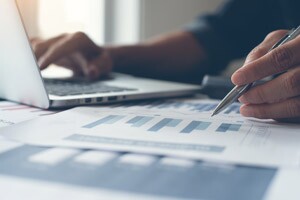For a business owner, lender or investor, a balance sheet provides a clear view into the financial health of a company. It’s a snapshot of the organization’s assets, liabilities and equity on a specific date—typically at the end of a month, quarter or year—which can be used to evaluate the business.1

As for the purpose of a balance sheet, it depends on who’s looking at it. A business owner will analyze the sheet to see how their company is doing financially and if any changes are necessary. A lender will consult a company’s balance sheet to understand the level of risk they would assume in awarding a loan. Alternatively, a potential investor or buyer could use it to decide if it’s a smart business decision to invest in or purchase the company.1
By knowing how to create, read and analyze a balance sheet, you’ll be arming yourself with a financial skill that’s in high demand by startup ventures, large organizations, investors, accountants and financial advisors. Keep reading to learn what a balance sheet is, why it’s useful (and to whom) and how to create and interpret one.
What is a Balance Sheet?

A balance sheet is a financial statement that shows the financial health of an organization by listing its assets, liabilities and the owner’s (or shareholder’s) equity.2 A balance sheet is one of three important documents that are used to assess a company’s worth; the other two are the income statement and the cash flow statement.3
What Does a Balance Sheet Show?
By creating and analyzing a balance sheet, you can get a clear picture of the current financial situation of your company, or of a business you’re thinking of investing in or purchasing.
A balance sheet can provide insight into these key areas:
- Efficiency – Compare your income statement to the balance sheet and see if the company uses its assets efficiently. Are assets effectively used to generate new revenue?
- Liquidity – Compare current assets to current liabilities for a measure of liquidity. How much cash is available for new investments and new business ventures? You should have more assets than liabilities, and there should ideally be a buffer to cover any short-term expenses.
- Leverage – How much financial risk do you face with this company? To determine leverage, compare debts to equity.2

In simple terms, a balance sheet shows what a company “owns and owes.”4 This is what makes it especially valuable to a lender or investor. But it also helps with business strategy and daily operations, as a business owner or chief financial officer can compare balance sheets of different periods to see trends and possible red flags.5
How to Read a Balance Sheet
A balance sheet is organized into three main sections—assets, liabilities and equity. A single period’s sheet is often presented as two columns—assets on the left, liabilities and equity on the right.1 However, it is sometimes organized top to bottom, with columns representing different years, for comparison purposes.
The key sections are as follows:
Assets
Assets are listed in the order of liquidity, which is how easily the asset can be converted into cash or consumed. Current assets are those which will be converted to cash within the year.
Examples of current assets are:
- Money that is in a checking account or in transit
- Accounts receivable (owed to you by clients or customers)
- Product inventory
- Short-term investments
- Prepaid expenses
- Stocks, bonds and currency 3
Long-term assets that are not going to be converted to cash soon include:
- Equipment and machinery (minus accumulated depreciation)
- Business-related buildings and land
- Intangible assets (i.e., trademarks, patents and goodwill)
- Long-term investments 3
Liabilities

Your company’s liabilities are what you owe to other individuals or businesses. List the liabilities in the order of due date. Current liabilities are due within a year, whereas long-term liabilities are due more than a year from the current date.
Current liabilities include:
- Accounts payable (i.e., what you owe your suppliers)
- Wages owed to employees for time worked
- Loan payments that are due within a year
- Tax payments 3
Long-term liabilities might include:
- Loan payments not due within a year
- Company-issued bonds 3
Equity
A company’s equity is money that is held by the organization. In the case of a sole proprietorship, its owner’s equity; for a corporation, its shareholders’ equity. This equity might include:
- Capital (money that the owner(s) invested in the business)
- Public or private company stock
- Retained earnings (all revenue minus your expenses since the company’s launch date)
The equity can be reduced if an owner withdraws cash from the business, or if a company pays out dividends to shareholders.3
The Balance Sheet Equation and Key Financial Ratios
Once all the details are entered in, you will be able to assess the company’s financial status.
The key balance sheet equation is:
Assets = Liabilities + Owner’s Equity
With a balance sheet for a single date, assets will be on the left and liabilities plus equity will be on the right. The two sides must balance (which is why this statement is named as such).3 In addition, the information in the balance sheet can be used to determine key financial ratios.
The Debt-to-Equity Ratio shows the company’s ability to pay off its debts with equity (total liabilities/shareholder equity).6
The Current Ratio indicates whether the company can pay its short-term debts within the next year by comparing current assets to current liabilities (current assets / current liabilities).3,7
Who Reviews a Balance Sheet?

Several types of business professionals review balance sheets for insight into a company’s financial health.
- Owners, founders and other stakeholders
- Entrepreneurs
- Lenders
- Investors
- Accountants
- Auditors
Keep in mind that a balance sheet has certain limitations. It doesn’t show all products, inventory and in-process products, which will all impact a company’s worth. Future events may threaten a company’s success, such as product quality, investor pull-out or loss of credibility. Balance sheets don’t indicate the current market value for products and assets.8
Polish Your Financial Skills for a Rewarding Career

Since balance sheets provide such vital information for the business community, there’s a high demand for experts who can skillfully create and analyze these and other financial statements. This foundational knowledge, combined with a keen understanding of modern accounting principles, will make you invaluable to employers.
The best way to supplement your undergraduate accounting education is with a Master’s in Accounting. However, if you’re going to invest your time and money in a degree, you want to make sure it’s worthwhile. An online MSA degree from the AACSB-accredited Yeshiva Sy Syms business school meets the world’s highest standards in education, so you can be confident you’re getting the most out of the program. From fundamental accounting concepts to contemporary topics, every course will help you build the knowledge necessary to earn your Certified Public Accountant (CPA) certification and open a multitude of career paths in the public or private sector.
- Retrieved on November 30, 2021, from sba.gov/blog/5-things-know-about-your-balance-sheet
- Retrieved on November 30, 2021, from freshbooks.com/hub/accounting/balance-sheet
- Retrieved on November 30, 2021, from bench.co/blog/accounting/balance-sheet/
- Retrieved on November 30, 2021, from investopedia.com/articles/04/031004.asp
- Retrieved on November 30, 2021, from investopedia.com/terms/b/balancesheet.asp
- Retrieved on November 30, 2021, from investopedia.com/terms/d/debtequityratio.asp
- Retrieved on November 30, 2021, from investopedia.com/terms/c/currentratio.asp
- Retrieved on November 30, 2021, from smallbusiness.chron.com/expresses-limitation-balance-sheet-23550.html

